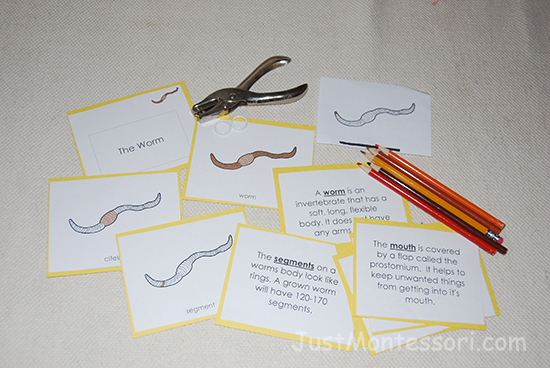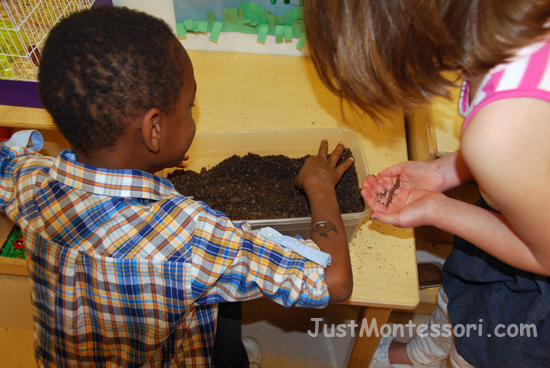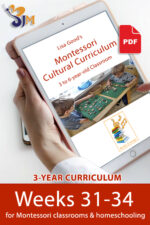Book choices for today:
Wiggling Worms at Work Wendy Pfeffer
Yucky Worms: Read and Wonder Vivian French
Wonderful Worms Linda Glaser
An Earthworm’s Life John Himmelman
Garden Wigglers: Earthworms inYour Backyard Nancy Loewen
Grandpas Are for Finding Worms Harriet Ziefert
Earthworms Harriet Llewellyn
Composting: Natures Recyclers Robin Koontz
Garbage Helps Our Garden Grow: A Compost Story Linda Glaser
Compost Stew Mary McKenna Siddals
Zoology: (first circle)
Need for lesson – Worms in a clear container for observing and Parts of a Worm.
Zoology 43
Have you ever been digging in the dirt and found a worm? These are earthworms. They are invertebrates. They are part of the annelid group of invertebrates. An earthworm has what is called a head end. This is where the worms head is. It is the anterior part of the worm. The other end is called the posterior, or the tail end. Their body has many little rings around it. These rings are called segments. An adult earthworm can have up to 120 to 170 segments.
Earthworms spend most of their lives underground. They tunnel through the soil eating it as they go. They also like to eat dead leaves. After plants and soil pass through an earthworms body, the earthworm leaves the waste materials in small piles called castings. Castings contain nutrients that help plants to grow. An earthworm’s tunnels allow for air into the soil so gardeners and farmers are happy to have lots of earthworms around.
Earthworms have five hearts! All five of their hearts pump blood through it’s blood vessels. Even though an earthworm doesn’t have eyes, they are able to tell the difference between light and darkness. There are cells in front part of the earthworm’s body that are sensitive to light. Sometimes when it rains you may notice worms on a street or sidewalk. The have been flood out of there tunnels and need to look for a drier place to dig a new burrow. Earthworms like to be in darkness down inside of tunnels. We are going to see the tunnels these earthworms make. We must leave them in darkness to go to work. We can check on them in a few days to see if we see tunnels along the edge of the container. They have dirt and dried leaves to eat. We are going to spray a little water on the soil also to keep it moist. Maybe we can see some of the castings they leave behind. Remember they are light sensitive so we want to keep them in the dark. I am going to put some black paper around our container and we can check it in a few days. After we observe our worms we can find a nice garden spot for them to live in.



Additional Work:
Worm Counting – I made a counting work with some fake worms from the fishing department at a local store.
Worm Sensory Tub – A small tub with fake worms, soil, and garden tools.


Songs/Poems:
Earthworms
Ten little earthworms, wiggling all around,
They wiggled and wiggled under the ground.
They wiggled and wiggled beneath a rock,
They wiggled and wiggled until ten o;clock!
They wiggled and squiggled up through the ground,
Twirling and swirling around and around.
Then all of a sudden, it started to rain,
And ten happy earthworms sang and sang,
“We love the rain, we love the rain!”
But a large clap of thunder, Boom!
Scared them back down under!
Science: (second circle)
Need for lesson – A bin in which to start a compost. A small one is fine to give the children an idea of what it is like, or larger one if you have the space and want to continue using it. Have some materials in which to start, like paper that the children can cut into pieces, some leaves, and coffee grounds, etc.
Science 72
We are going to talk a little about composting. What is it? Why is it good to compost? Compost added to a gardens adds nutrients and improves plant growth. You start to add things to a compost bin or some people will make a compost pile in their yard. these things break down and become rich, healthy matter that you can add to plants. It will help flowers, vegetables, trees, shrubs, grass, and other plants to be healthy. What do we put in a compost bin or pile? Things like dried leaves, pine needles, dried grass, shredded paper, tea bags, coffee grounds, grass clippings, weeds, and fruit and vegetable waste. All these things will slowly break down into small small bits and mix together to make a beautiful rich compost for plants. It is almost like vitamins for plants.
Let’s start with this paper. We need to cut it into little pieces, and then add some of these other things. In a few day we need to turn over the pile and to let air get inside. We also want to mist it with water to keep it moist. Then we just wait and let the compost go to work breaking down into smaller pieces and mix together.
Buy Weeks 31-34 PDF
-
 (I) Weeks 31-34$25.00
(I) Weeks 31-34$25.00


